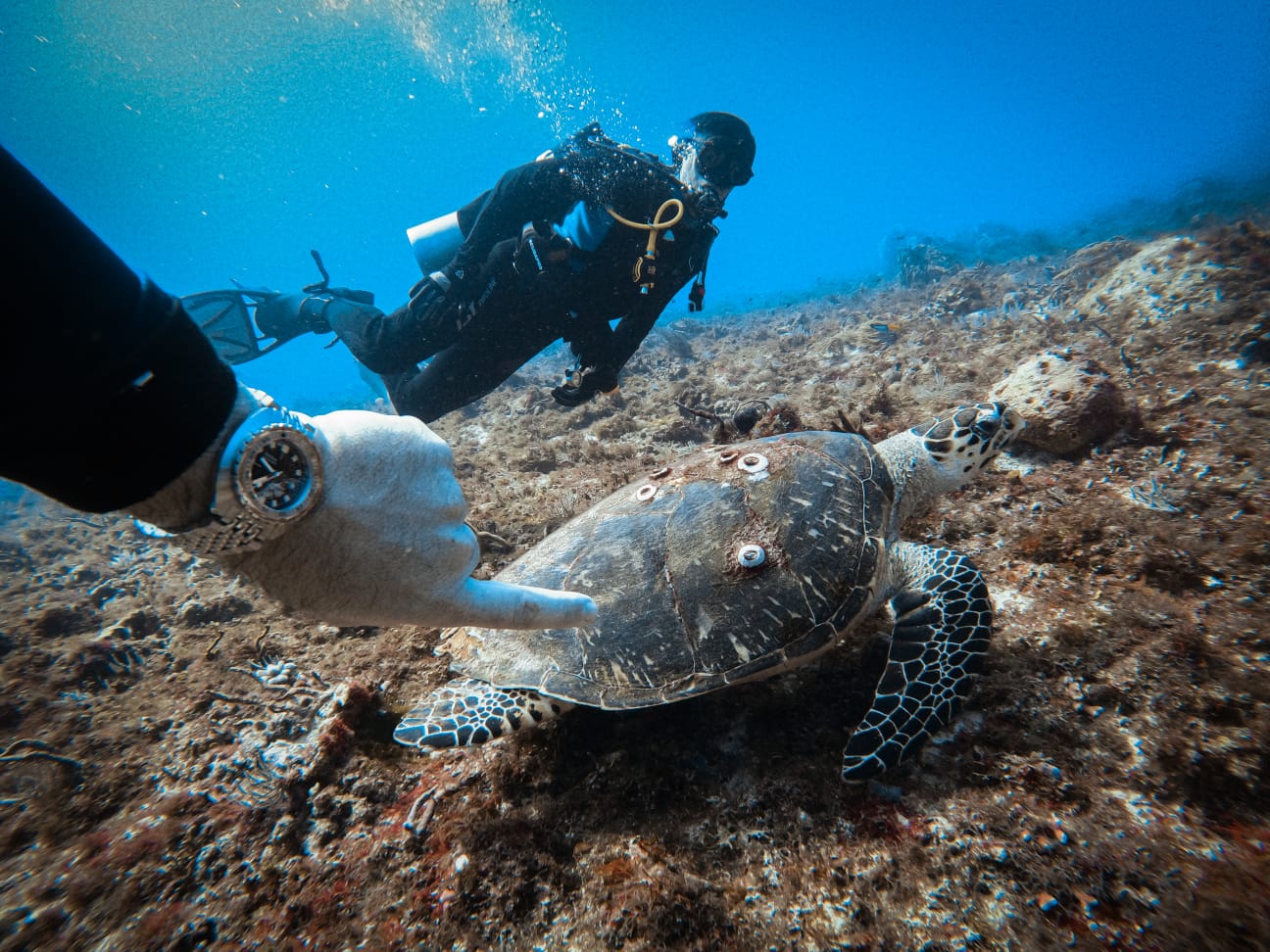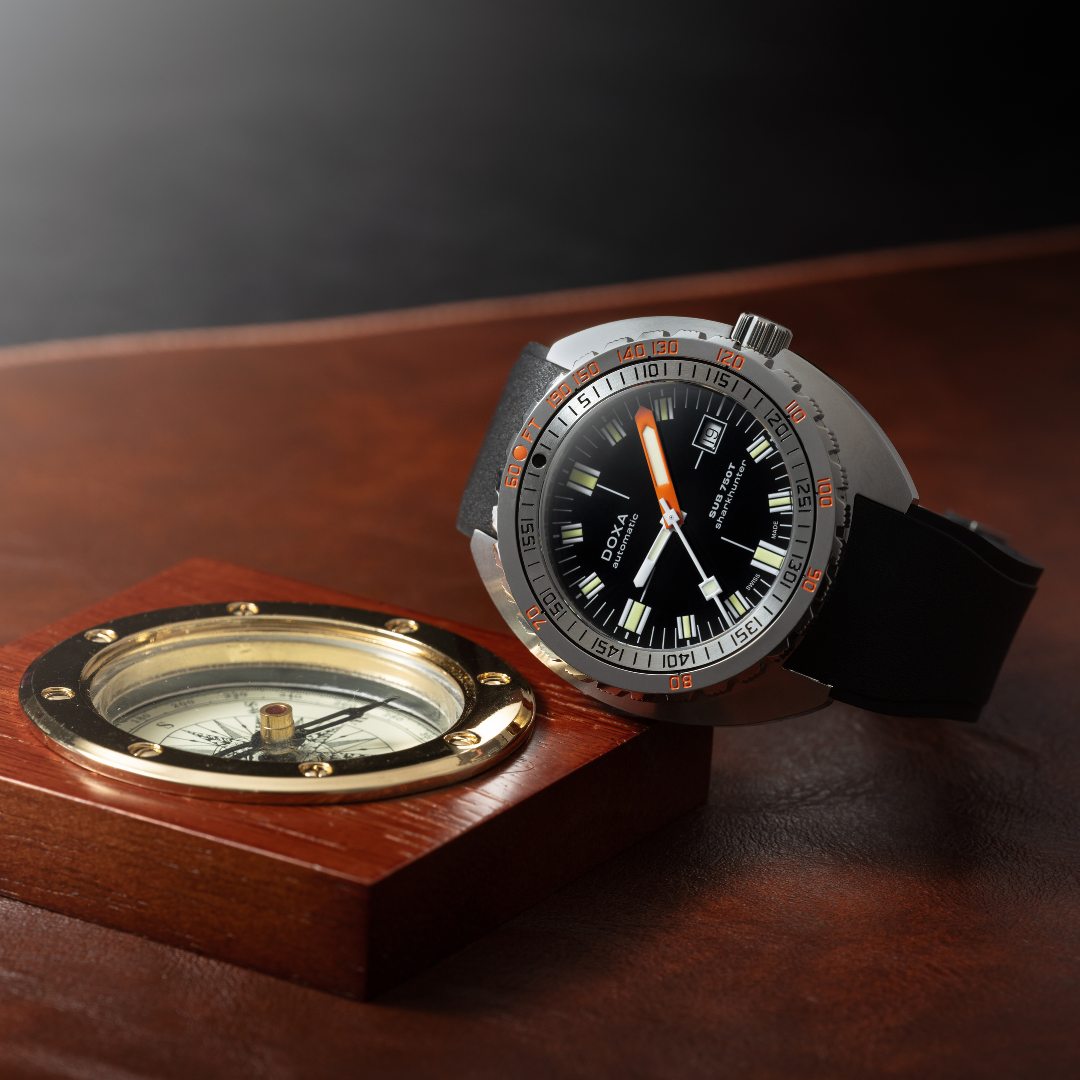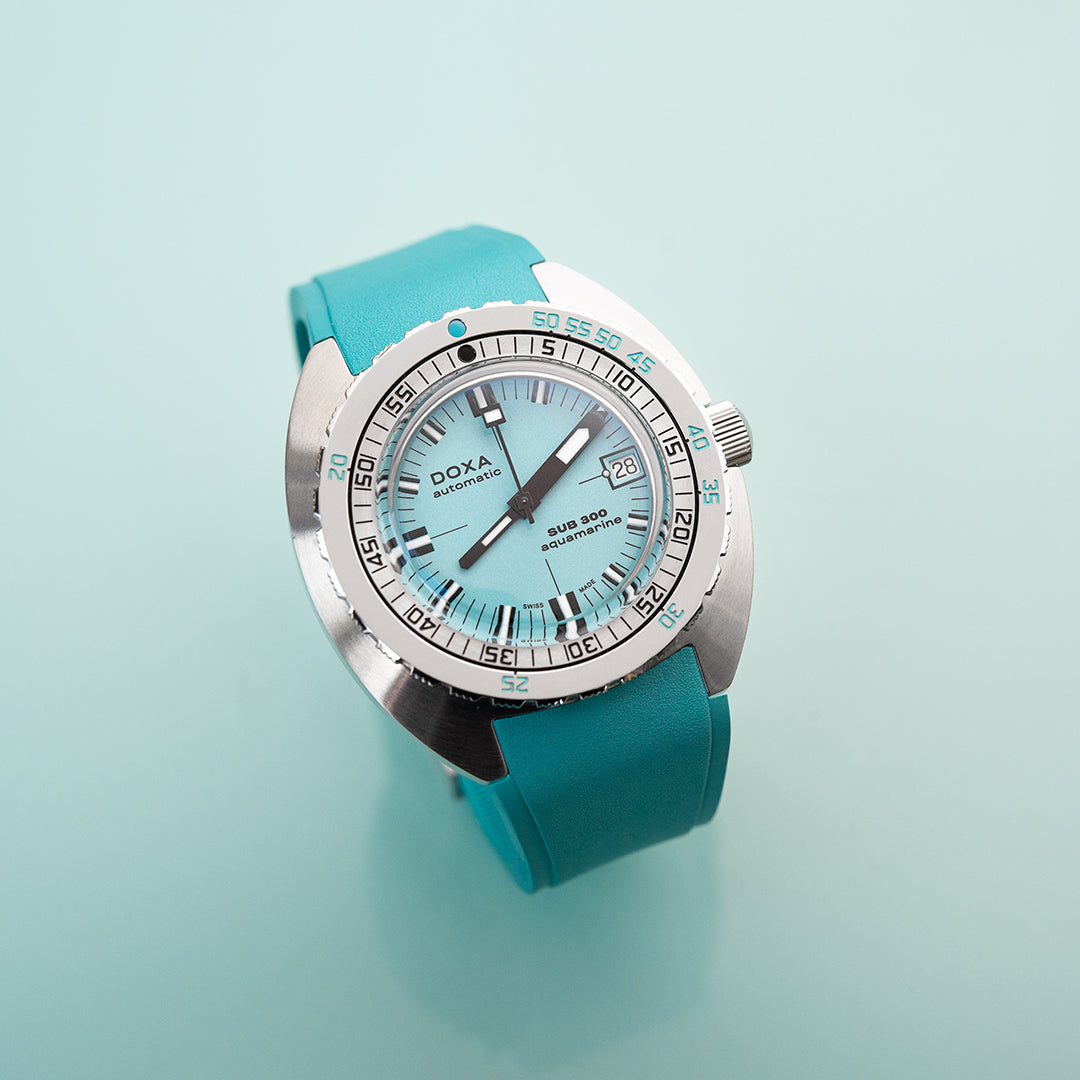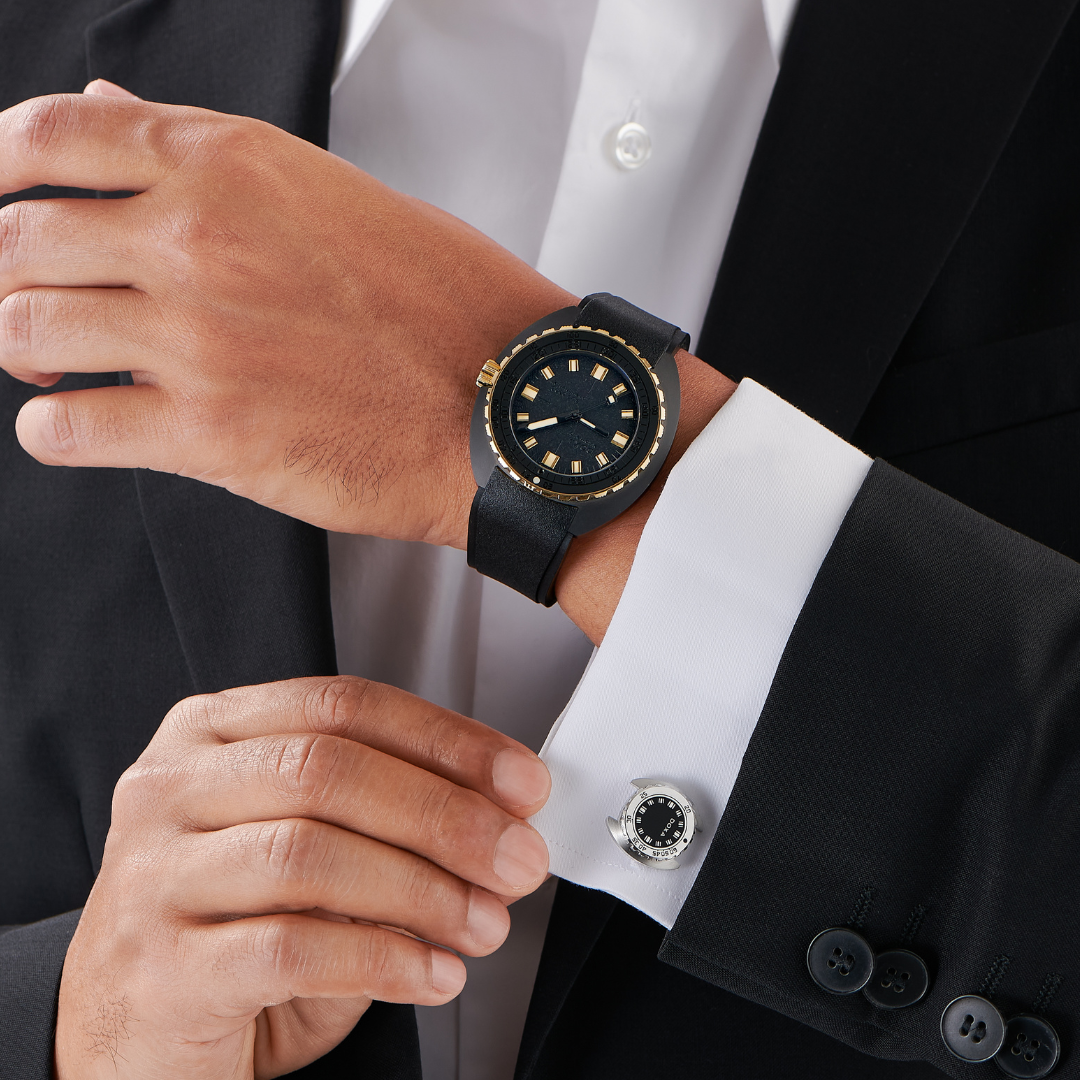
Danger at Depth: Bob Collins' Guide to Safe Diving Practices
In this month’s B-Log, Friend of DOXA Bob Collins discusses his life beneath the surface including a career in the military and teaching diving skills around the globe, whilst always ensuring that rigorous safety measures are stuck to like glue…
Bob Collins' journey into the underwater world began in 1969, an era when diving was less regulated than it is today, and the importance of qualifications and certification was not as widely recognized. In fact, it was during an uncertified dive, during high school, that life took a pivotal turn after the tragic drowning of a friend, highlighting the critical need for proper training and certification. This event propelled Bob towards obtaining his certification with PADI, marking the beginning of a lifelong commitment to diving safety and education.

DOXA Diaries
On this theme of underwater safety, for Bob Collins the choice of diving watch is as critical as any piece of his diving equipment. Central to this is his enduring love for DOXA, watches that have accompanied him through countless dives. Bob's affinity for DOXA began during his first deployment with the Navy in 1970, where when faced with the usual choices of dive watches, he really desired something more distinctive. He spotted a DOXA SUB 300 Professional during an R&R trip to Garmisch, Germany and it was this watch, which he sadly lost during an aircraft recovery dive off the coast of Greece in 1971, that marked the start of a lifelong affinity. Over the years, Bob has owned several DOXA pieces, from Divingstars and SUB 600T's to a SUB 1200T NUMA Limited Edition, a SUB 300T Professional, and a Clive Cussler Edition.
Top 5 Most Important Safety Aspects When Diving:
Bob's military service in both the US Army and Navy not only honed his discipline but also provided him with unique diving experiences across the globe. After retiring from active duty, Bob transitioned to teaching, initially as a part-time PADI instructor, before fully immersing himself in the role upon moving to Florida in the mid-90s. His credentials expanded to include Master Instructor for the NASE (National Academy of Scuba Educators) agency, SSI (Scuba Schools International) in 2010, SDI (Scuba Diving International facet of International Training) in 2012, and eventually becoming an SDI Course Director IT (Instructor Trainer) in 2014. His influence in the scuba industry was recognized in 2021 when he was awarded Ambassador status for SDI International Training, and in 2022, he added NAUI (National Association of Underwater Instructors) Course Director Trainer to his responsibilities with Divers Supply.
Bob emphasizes the paramount importance of safety in diving, distilled into five critical aspects:
Get Professional Training: “Diving is not a pursuit to undertake lightly or without proper instruction. I cannot stress enough the importance of professional training and certification to understand the risks and how to mitigate them effectively.”
Own Your Dive Gear: “Personal dive gear ensures familiarity and reliability. I always warn divers about the pitfalls of using outdated or poorly maintained equipment, which can compromise safety.”
Dive Within Your Limits: “A cornerstone of diving safety is knowing your limits and adhering to them, regardless of peer pressure or the perceived capabilities of your dive buddy.”
Pre-Dive Buddy Safety Checks: “Every dive should begin with a thorough safety check of your and your buddy's gear. This practice ensures that all equipment is functioning correctly and can prevent accidents.”
Trust Your Instincts: “If a dive situation doesn't feel right, it's essential to speak up. Always err on the side of caution and not be swayed by the group's consensus.”

Insights from the Deep
Bob's most harrowing experience was rescuing a diver in distress at a depth of 120 feet (35 meters) in 240 feet (70 meters) of water. This incident underscored the importance of vigilance, quick thinking, and, most importantly, adhering to one's training. Bob's mantra, "Expect the Unexpected," served him well during this critical moment, enabling him to save a life and later be honored with the Navy Eagle award for lifesaving.
The most common mistake Bob observes among inexperienced divers is neglecting to refresh their skills and knowledge, especially after a significant period without diving. This oversight can lead to preventable accidents and close calls.
Dos and Don’ts:
DO get professional training. DON'T dive beyond your qualifications.
DO invest in your dive gear. DON'T compromise on safety with outdated equipment.
DO dive within your training limits. DON'T exceed your comfort zone.
DO perform pre-dive safety checks. DON'T overlook gear issues.
DO signal "NO" if unsure. DON'T proceed with doubts.

Bob Collins' contributions to diving safety and education are invaluable. His experiences, insights, and unwavering commitment to responsible diving practices serve as a beacon for both new and experienced divers. By embodying the principles of preparation, caution, and respect for the ocean, Bob's legacy continues to inspire a safer diving community. Bob’s passion for DOXA is intertwined with personal milestones, like reading Cussler's books during his time in Antarctica in 1987-88, which only deepened his connection with the brand. Currently, he has his sights set on the 200 Sharkhunter. For Bob, wearing his DOXA is not just a nod to functionality but an expression of identity and a link to a community of divers who value precision, durability, and a shared history of underwater exploration.

Bob Collins diving off Florida wearing his 300T Professional





